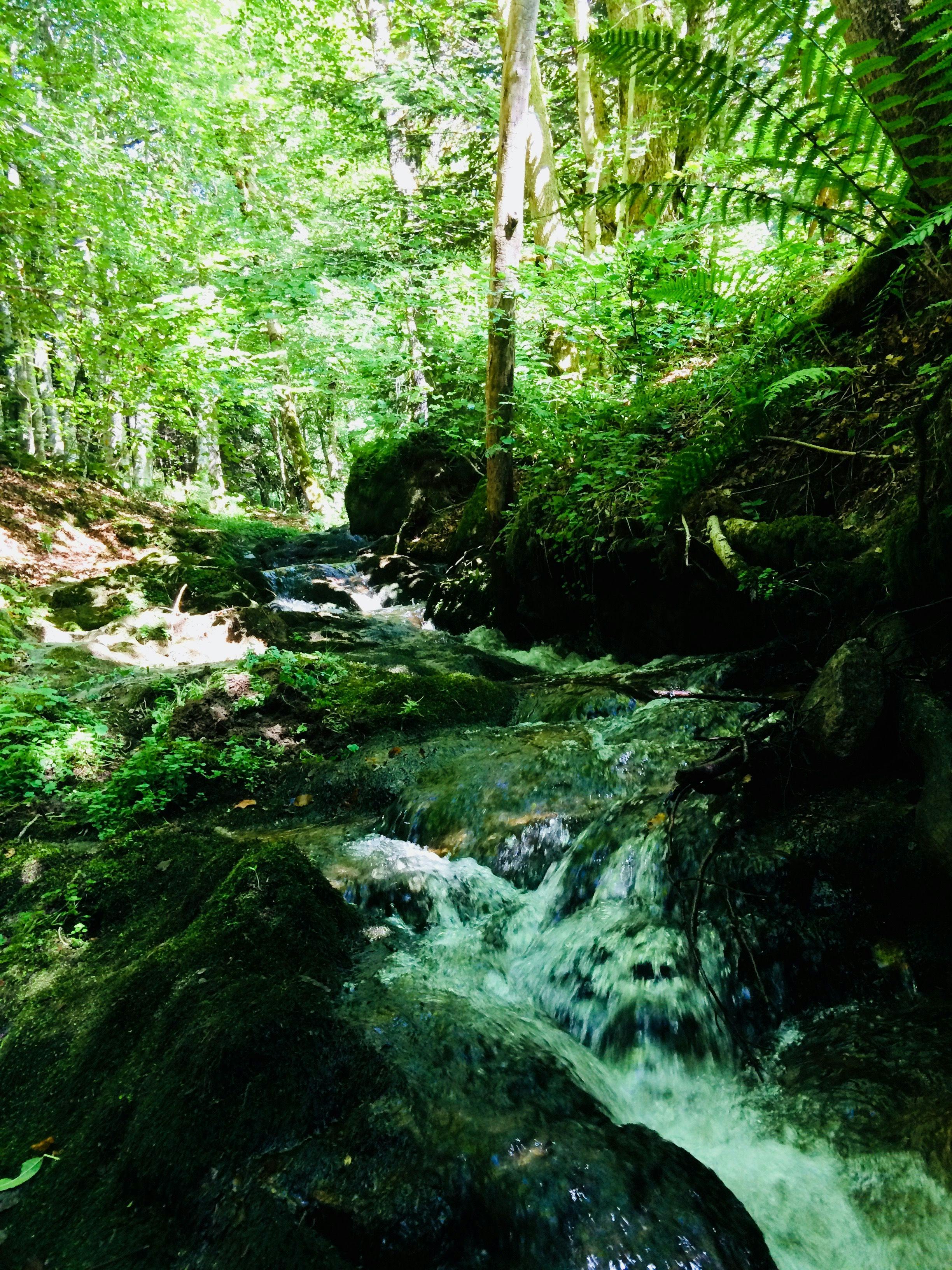In Amazonian indigenous cosmologies, plants have padres or madres, spirits with agency and anthropomorphic traits, which are respected for their power to heal and harm people. The skill of a healer rests on his or her ability to form relations with plant spirits and to receive knowledge from them (Škrabáková 2014). A particularly powerful method of developing relations with plants is through the practice of dieting (Jauregui et al 2011). This refers to the ritual ingestion of specific medicinal plants, which usually takes place in isolation in the forest for an extended period of time, whilst abstaining from sex and abiding by dietary restrictions.
This form of dieting purifies the body, facilitates contact with the spirit of the plant and makes the learning process possible on a number of levels (Luna 1984; Jauregui et al 2011). Eating restrictions potentiate the effects of the medicinal preparation and assist the dieter to gain a direct experience of the plant's properties through the embodiment of its qualities (Freedman 2012). Isolation from social life gives the apprentice a chance to observe the plant's ecosystem and come into closer contact with the visible and invisible beings that dwell in it (Freedman 2012).
This embeddedness within the environment is important to help the apprentice make contact with the spirit of the plant they are dieting. The latter may appear in dreams and visions to impart healing knowledge directed toward oneself or others. As the relationship deepens, a plant spirit may share how to improve a preparation method (Luna 1984). Eventually, plant spirits may hand down icaros to the apprentice: these chants are said to carry the healing power of a medicinal plant and may also be used to call its spirit (Luna 1984). Multi-species approaches which draw attention to the zone of contact between humans and other species (Kirksey and Helmreich 2010) allow us to understand icaros as forms of human-plant communication within the larger phytosemiotic process that is the diet (Callicott 2013). The number of diets a healer has gone through and the number of icaros received become a testament to their ability to relate and communicate with medicinal plant spirits, and therefore of their knowledge, power and healing skill. (Luna 1984, Beyer 2009).
Gearin and Labate (2018) observed that the western attraction to Amazonian plant medicine has given primacy to the psychological domain of the consumer, and excluded the spirited environment from the understanding of the diet experience. (Gearin and Labate 2018) Gearin and Labate's focus is mainly on the use of diet within the ayahuasca ceremonial context, which is not entirely comparable to dieting other medicinal plants. However, my own research addresses similar questions by exploring the role the environment plays within the practice of plant dieting in Europe.

During the summer of 2018 I interviewed and observed French herbalist Celine Cholewka, who apprenticed in the Peruvian Amazon and is now administering diets of legal plants native to the French ecosystem, such as Oak and Birch. She utilises diets as a healing method with her patients and as a tool to discover the properties and the spirits of European plants. Unlike what Gearin and Labate observed in international ayahuasca circles, I found that the surrounding environment holds a central role and is inseparable from the psychological and therapeutic experience of the plant diets she offers. In fact, Celine defines her healing therapy as a means of bridging individuals' separation from nature and finding and feeling one's place in it.
Dieting plants is not a one night experience like many ayahuasca ceremonies. Her patients usually carry out one week diets in solitude, immersed in nature. Their time is spent lying on a hammock in a state of observation of the surrounding trees and animals. Celine explains that the semi-fasting conditions of dieting slow down movements and activity and time is spent absorbed in nature. Her understanding is that the porosity created by the absence of salt and lack of food are necessary to make space mentally, physically and spiritually both for the ingested plant spirit to enter and for a connection to the surrounding nature to unfold. She argues that people benefit more from this method if the plant they are dieting grows nearby, and the ecological connection to it assists with the spiritual connection. A consistent theme that emerged from the study is that through the active and embedded connection to the plant spirit, diets may lead to the recognition of nature as an inspirited space.
Even the apprenticing process of dieting is understood as more than a form of acquiring healing powers and learning about the medicinal properties of a plant. Apprenticing, in Celine's terms, requires coming into contact with the plant, learning about its ecological qualities and how it relates to the surrounding environment. The first European plant Celine ventured to diet was Oak. This is an excerpt of her description of her time dieting with oak:
“And this oak was 500, maybe 600 years old. And it was as if it gave me the wisdom of time, as if I had received centuries-old wisdom. I had so many dreams, so much with the spirit of the plant, as if it was inside me. It made me accept masculine energy, and felt like I was given a 500 year old energy! Because in 500 years this oak tree has been through a lot. It saw so many human beings on its way, it witnessed wars, it experienced a lot of snow, storms, rain, sun and drought. It had to cope with it all during 500 years. Its cells absorbed the strength of all these elements to grow, and this is what he passes on to you. It’s a magnificent plant for this reason... after the diet I had a feeling I was an old woman, as if the oak tree had transmitted me his age also. I lived birth and death with this tree, something incredible. Cellular knowledge, as if it passed on to me his DNA.”
By dieting, Celine perceives the ecological qualities of oak, integrates its gendered identity and feels the climatic changes its physical body experienced. She is imparted a particular knowledge developed by that specific tree.
Her ability to communicate with plant spirits does not only express itself in her healing activity, but also in her land management. Celine asks the guardian spirit of the plant for permission to collect its parts and calls for its presence and participation in the healing rituals. She uses chants to communicate with the food crops she grows and relies on communication with plant spirits in her decisions about what trees to cut, or which plants to collect. Celine claims her aim is to protect the ancient trees on her land and the knowledge they hold. Inspired by Gibson's (2018) provocation to "make sense of plants as actants, entities that can have an effect on their environments and relationships within it" (Gibson 2018:3), I think that in Celine's world, plants are bringing about social change by developing her attitude and behavior towards nature and as a result to the people who diet under her guidance.
The Amazonian medicinal tradition is undoubtedly being shaped by new cultural contexts as it is uprooted and replanted around the world (Labate 2014). But as in Celine's case, these practices may also be transformed by the qualities of new plants to which they are being introduced. A French Oak gives teachings which are markedly different from those offered by Amazonian plants, grounded in their different ecological world. Dieting serves far more than a purely individualised and therapeutic purpose. It may become a tool to acquire experiential knowledge of our inner, as well as of our outer ecology, and to develop human-plant relations of a spiritual nature in different cultural contexts.
References
- Callicott, C., 2013. Interspecies communication in the Western Amazon: Music as a form of conversation between plants and people. European Journal of Ecopsychology, 4(1), pp.32-43.
- Freedman, F.B., 2012. Shamanic Plants and Gender in The Healing Forest. Plants, Health and Healing, On the Interface of Ethnobotany and Medical Anthropology, 6.
- Gearin, A.K. and Labate, B.C., 2018. "La Dieta": Ayahuasca and the Western reinvention of indigenous Amazonian food shamanism. In The Expanding World Ayahuasca Diaspora (pp. 195-216). Routledge.
- Gibson, D. 2018. Rethinking medicinal plants and plant medicines. Anthropology Southern Africa. pp.1-14
- Jauregui, X., Clavo, Z.M., Jovel, E.M. and Pardo-de-Santayana, M., 2011. "Plantas con madre": Plants that teach and guide in the shamanic initiation process in the East-Central Peruvian Amazon. Journal of Ethnopharmacology, 134(3), pp.739-752.
- Kirksey, S.E. and Helmreich, S., 2010. The emergence of multispecies ethnography. Cultural Anthropology, 25(4), pp. 545-576.
- Luna, L.E., 1984. The concept of plants as teachers among four mestizo shamans of Iquitos, northeastern Peru. Journal of Ethnopharmacology, 11(2), pp.135-156.
- Škrabáková, L. 2014. "Amerindian Perspectivism and the Life of Plants in Amazonia." In Non-humans in Social Science: Ontologies, Theories and Case Studies, edited by K. Pauknerová, S. Marco, and P. Gibas, 165--185. Červený Kostelec: Pavel Mervart.

